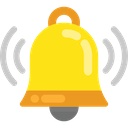James,
How did the engine run before you rebuilt the carburetor?
The overheated catalytic converter is another sign of an overly rich condition. When the cat gets up to operating temperature, and unburned fuel is exiting the engine into the exhaust system. The fuel will ignite when it hits the core of the cat.
You say the engine is overheating. What temperature do you see on the temp gauge?
Based on what you have said, these are my conclusions;
Your carburetor is way too rich.
That is why you see gas coming out of the face of the carb.
Seeing the RPM rise when you manually raise the air valve is an indication of a rich condition. Raising the piston allows more air to enter the intake. This allows more of the gas to burn and the RPM increase.
The overheated cat is another indication of it being too rich.
The exhaust system is overheating, causing the paint to smoke in the engine bay. (I don't know the temp gauge reading, this reading would help to know if it's the engine or the exhaust)
There is something very odd about the needles. I can't comment on the reason for the difference in length. Unless the previous owner installed a different carb, or replaced some of the internals.
Is it possible that the carb is not the original?
Did you replace the fuel pump? If so, did you replace it with an electric pump?
I suggest you check the following;
1) You may have melted the core of the cat when it overheated. Remove it and check. If it is damaged, and you fix the problem in the carb, you will still have problems when you try to run the engine because the exhaust system will be clogged. This is in line with what trrdster2000 mentioned in his reply.
2)Remove the float bowl and check the setting. If the float is not set correctly. When the fuel pump is pumping, the float is not closing the needle valve which allows excess gas to pass through the jet into the intake.
If you have a mechanical pump with a manual priming lever. Try pumping it while someone lifts the carb piston and watches to see if raw fuel is coming out around the jet. I'm not sure you can pump it fast enough to see gas leaking. However, since the engine is not running, therefore not sucking the fuel into the intake, you may be able to see any excess gas that is flowing out of the seat.
3) Check the fuel pressure. If you have an electric fuel pump, or a new mechanical pump your fuel pressure may be too high. Too much pressure can overcome the float/needle valve and force extra gas into the jet. You can install a fuel pressure gauge in the fuel line. Speed shops sell them for around $20, add a couple of dollars for some fittings. If the speed shop doesn't have the fittings call an industrial supply house or hydraulic hose supply house. The fuel pressure is fairly low for these carbs. Use a gauge that reads something like 0 to 10 PSI. You don't need one that reads 0 to 100. The pressure you want to read is around 3 pounds (? check the manual)
4) Check the needle valve. Make sure it is closing when the float reaches it. Also check to see that the needle valve is fully seated and sealed. Even if the needle valve closes properly, gas could get past the valve body if the seal is not good or the threads are damaged.
5) If none of this helps you may be better off sending the carb to one of the professional shops mentioned above. Curto has a good reputation. I believe TR6Bill used Gary Martin to build his triple carb setup. (Is that correct Bill?) There is also a rebuilder in Ohio named Jeff Palya.
BOBH

 Hi Guest!
Hi Guest!
 smilie in place of the real @
smilie in place of the real @
 Pretty Please - add it to our Events forum(s) and add to the calendar! >>
Pretty Please - add it to our Events forum(s) and add to the calendar! >> 